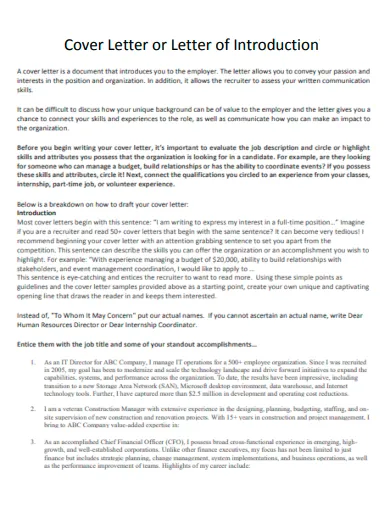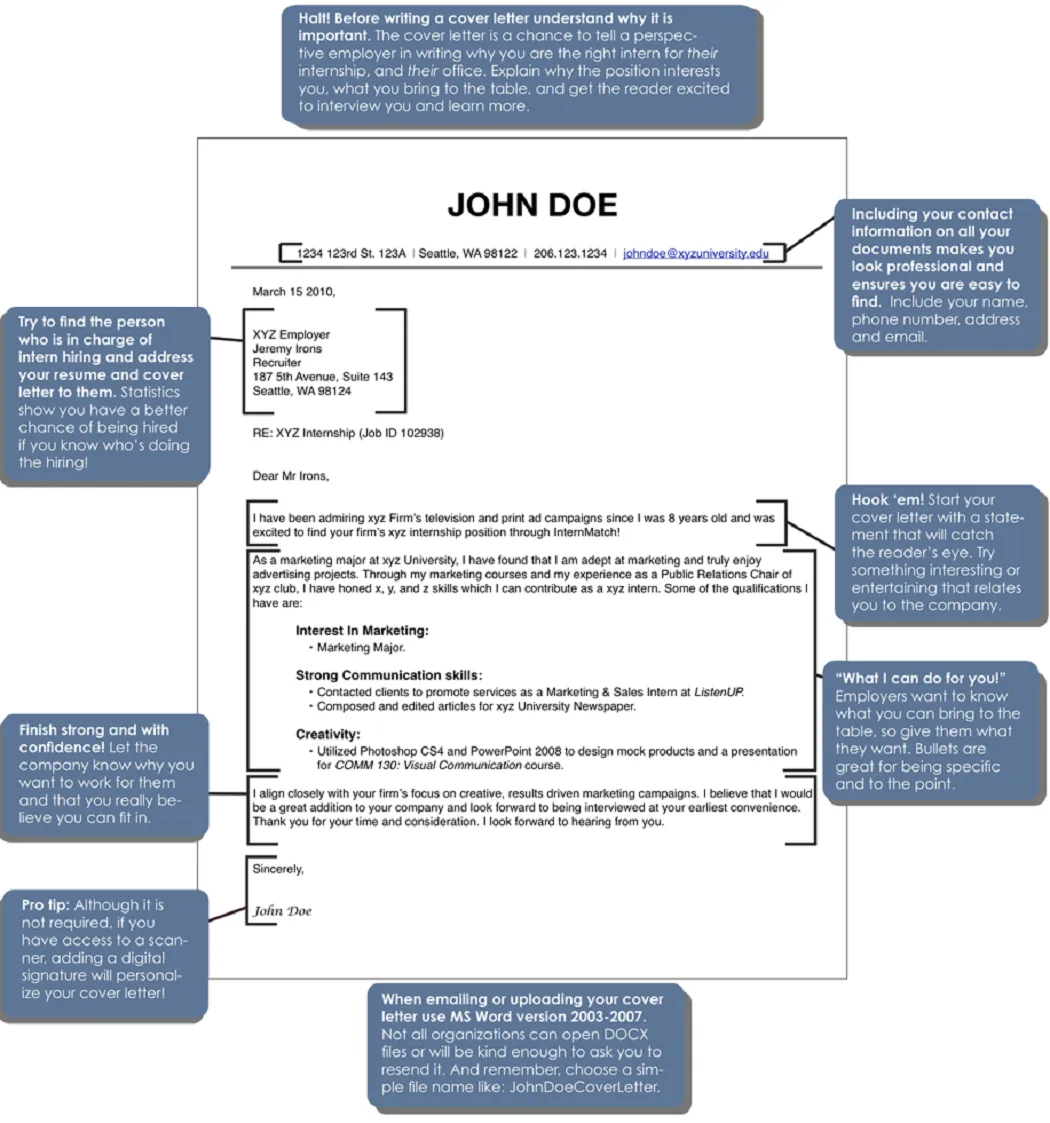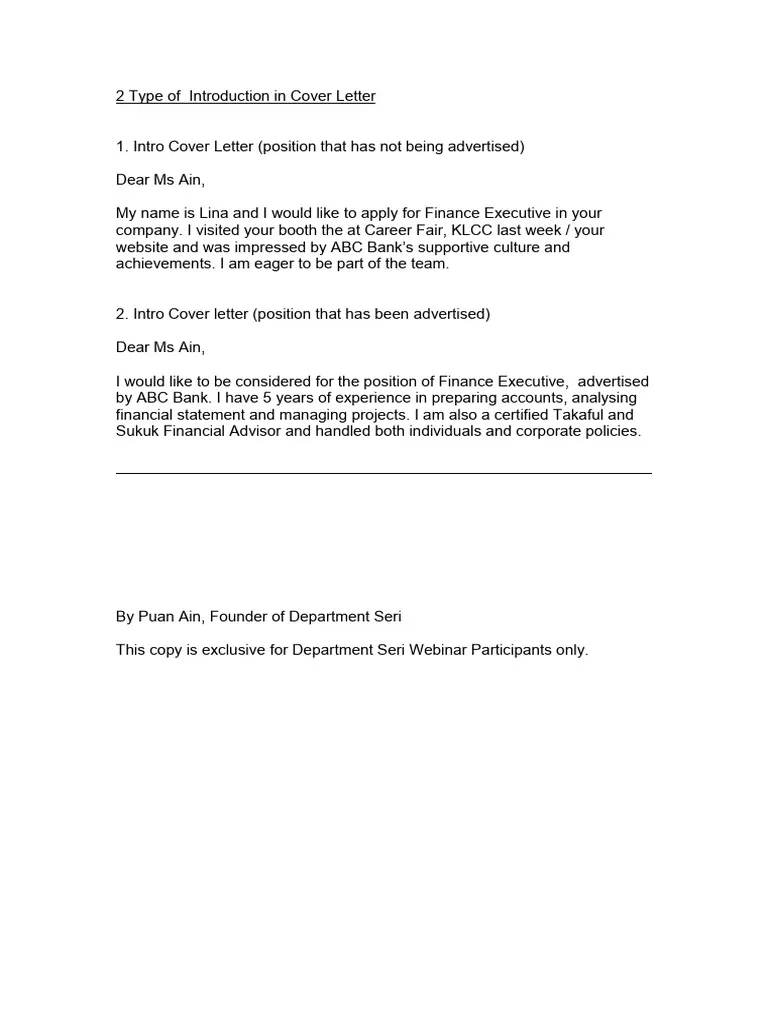Cover Letter Introduction: Why It Matters
The introduction to your cover letter is arguably the most crucial part. It’s your first chance to make a strong impression and persuade the hiring manager to read further. Think of it as the elevator pitch for your entire application. A well-crafted introduction immediately grabs their attention, sets the tone, and signals your suitability for the role. It can be the difference between your application ending up in the ‘read’ pile or the ‘recycle bin’. In today’s competitive job market, where recruiters sift through countless applications, a compelling introduction is your key to standing out and securing an interview. Failing to make a good first impression can be detrimental to your chances.
Crafting a Compelling Cover Letter Introduction
Crafting a compelling introduction involves a blend of strategy and personalization. It’s not about simply repeating what’s in your resume; it’s about showcasing your unique value proposition and demonstrating a genuine interest in the specific role and company. The ideal introduction should be concise, engaging, and tailored to the job description. Always research the company and the hiring manager, if possible, to personalize your approach. Your goal is to immediately capture the reader’s attention and make them want to learn more about you. You need to highlight your relevant skills and experience while also conveying your enthusiasm for the opportunity.
Tip 1 State Your Purpose Clearly

Begin by clearly stating the position you’re applying for and where you found the job listing. This helps the hiring manager quickly understand why you’re writing. Be direct and specific. Avoid generic phrases like ‘I am writing to express my interest’. Instead, try something like, ‘I am writing to apply for the Marketing Manager position advertised on LinkedIn.’ This immediately provides context and shows that you’re organized and attentive to detail. You also want to show that you know the name of the position and where you are applying it from. This will save the hiring manager some time and make it simple for them to get to know you and what you are applying for.
Tip 2 Highlight Your Key Skills
Immediately after stating your purpose, highlight one or two of your most relevant skills or accomplishments that align with the job description. This is where you demonstrate your value. Don’t simply list skills; briefly explain how you’ve used them to achieve results. For example, instead of saying ‘Proficient in project management,’ you might say, ‘Managed cross-functional project teams to deliver projects under budget and ahead of schedule.’ Quantify your achievements whenever possible. This section gives a quick snapshot of your expertise and shows you’re capable. The key here is relevancy; tailor this section to match the specific requirements of the role.
Tip 3 Show Enthusiasm for the Role
Expressing genuine enthusiasm for the opportunity is crucial. Show that you’re not just looking for any job, but that you’re specifically excited about this particular role and company. Mention something that resonates with you about the company’s mission, values, or recent projects. Researching the company beforehand and referencing something specific demonstrates your interest and initiative. This could be anything from a recent product launch to an article about the company culture. This level of personalization shows you’ve taken the time to understand their business, which makes you stand out from other applicants who have a standard cover letter.
Tip 4 Mention a Mutual Connection

If you have a mutual connection with someone at the company, mentioning their name can be a powerful way to build rapport. This could be a colleague, a former classmate, or someone you met at a networking event. A brief mention, such as ‘I was connected with [Name] at [Company] during a recent industry conference, and he spoke highly of the company culture,’ can make your application more memorable. Make sure to obtain their permission before mentioning them, and only do this if the connection is positive and relevant. However, don’t force this. If you don’t have a connection, don’t worry—focus on the other tips instead.
Tip 5 Keep It Concise and Engaging
The introduction should be brief and to the point, ideally no more than three to four sentences. Hiring managers are busy and have many applications to review, so you need to make your point quickly. Use strong verbs, active voice, and avoid jargon or overly formal language. Your goal is to capture their attention and encourage them to read the rest of your cover letter. Consider starting with a compelling hook – a relevant achievement, a brief statement about your passion for the industry, or a thought-provoking question. A strong opening will ensure the hiring manager wants to continue reading to the end.
Cover Letter Introduction: Examples and Templates
Here are a few example introductions and basic templates, adapting them to your specific situation. Example 1 (Enthusiasm and Purpose) ‘I am writing to express my enthusiastic interest in the Marketing Manager position at [Company Name], as advertised on [Platform]. I’ve been a long-time admirer of [Company’s] innovative approach to [Industry] and am eager to contribute my experience to your team.’ Example 2 (Skills Focused) ‘With over five years of experience in project management, including leading successful cross-functional teams at [Previous Company], I am excited to apply for the Project Manager role at [Company Name]. My track record of delivering projects under budget and ahead of schedule aligns perfectly with your requirements.’ Example 3 (Mutual Connection) ‘I am writing to apply for the Software Engineer position at [Company Name]. I recently spoke with [Name], who spoke highly of the company’s team culture and innovative projects, and I am very eager to be a part of it.’ Always make sure to tailor the examples and the templates to match your specific circumstances.
Common Mistakes to Avoid in Your Introduction

Several common mistakes can undermine your cover letter introduction. Avoid generic introductions that fail to mention the specific job or company. Don’t repeat information from your resume verbatim; the introduction should complement your resume, not duplicate it. Keep the introduction concise; avoid writing too long or getting sidetracked with unnecessary details. Ensure that your cover letter is free from grammatical errors and typos, as these can create a negative impression. Finally, never use a template without personalizing it to fit the job description and the company. A generic introduction is a clear sign that you have not put in the effort to tailor your application and is an instant turn off for hiring managers.
In conclusion, the introduction to your cover letter is your first and most important chance to make a positive impression on potential employers. By clearly stating your purpose, highlighting relevant skills, expressing your enthusiasm for the role, and keeping it concise and engaging, you can significantly increase your chances of getting noticed. Remember to personalize your introduction for each job application and avoid common mistakes, and you will be well on your way to crafting a cover letter that gets you noticed.
